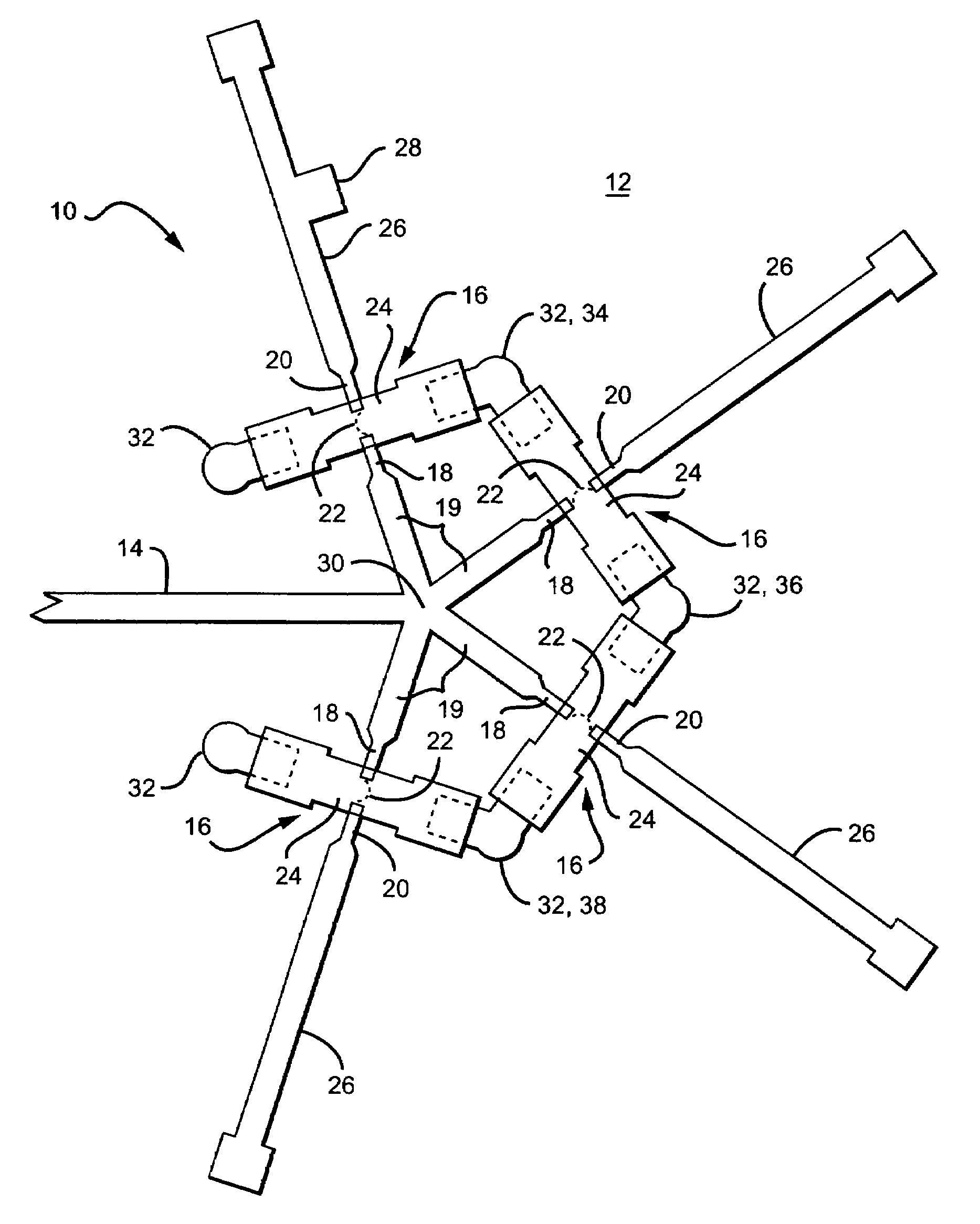1:N MEM switch module
a technology of mem switch and switch module, which is applied in the direction of waveguide type devices, electrical apparatus, electrostrictive/piezoelectric relays, etc., can solve the problems of circuits, increased power dissipation, cost, unit size and weight, etc., and achieves low insertion loss, reduced number of switches and die area required
- Summary
- Abstract
- Description
- Claims
- Application Information
AI Technical Summary
Benefits of technology
Problems solved by technology
Method used
Image
Examples
Embodiment Construction
[0019]A plan view of a 1:N MEM switch module 10 in accordance with the present invention is shown in FIG. 2. The module's MEM switches and interconnecting traces are fabricated on a common substrate 12. The module comprises a common signal input line 14 which receives a signal to be switched, and N MEM switches 16; in the example shown, there are four MEM switches.
[0020]Each MEM switch in the module has an input contact 18 and an output contact 20 on substrate 12, with the two contacts separated by a gap 22. Each switch also includes a movable contact 24 which provides an electrically continuous path between the switch's input and output contacts when the switch is “actuated”. Each input contact 18 is connected to common signal input line 14 via a switch input line 19, and each output contact 20 is connected to a respective signal output line 26. While the MEM devices in this example are ohmic-contact switches which provide a conductive path upon closure, the invention can also be i...
PUM
 Login to View More
Login to View More Abstract
Description
Claims
Application Information
 Login to View More
Login to View More - R&D
- Intellectual Property
- Life Sciences
- Materials
- Tech Scout
- Unparalleled Data Quality
- Higher Quality Content
- 60% Fewer Hallucinations
Browse by: Latest US Patents, China's latest patents, Technical Efficacy Thesaurus, Application Domain, Technology Topic, Popular Technical Reports.
© 2025 PatSnap. All rights reserved.Legal|Privacy policy|Modern Slavery Act Transparency Statement|Sitemap|About US| Contact US: help@patsnap.com



